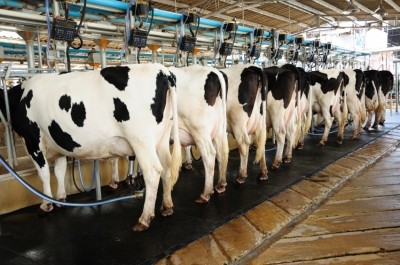ForFarmers sees large volume growth in compound feed sales

The Dutch feed company has just released its full year financial results for last year. Its gross profit was up 3% to €419.8m, driven by “4.2% like-for-like growth and including a negative currency translation effect.”
It said its underlying earnings before interest, taxes, depreciation and amortization (EBITDA) jumped 8.3% to €101.4m. Revenue was at €2.21bn versus €2.11bn a year ago.
“Thanks to enhanced milk, swine and poultry prices, the financial situation for farmers in Europe generally improved in 2017. Volume growth in higher value-add compound feed was consequently larger than growth in Total Feed, which includes lower added value products as co-products - dry, moist and liquid.”
The company said its Dutch, German and Belgian business showed a clear improvement in 2017.
However, its UK operations came under pressure. “In that country (UK), we were confronted with challenges in the logistic services and rapidly changing market circumstances. In the meantime, the measures that were taken have resulted in enhancing our services to the required levels.”
Total feed volumes jumped 3.2% to 9.6m tons, due to both organic growth and the Vleuten-Steijn pig feed acquisition, reported ForFarmers.
Its compound feed volume were up 5.8% to 6.7m tons, with the company saying that hike was due to farmers buying more performance feed.
ForFarmers looks to capitalize on non-GMO trend
The long-term prospects for the agricultural sector in northwest Europe remain positive, according to ForFarmers, but producers face increasing regulatory obligations and consequently cost increases.
The ruminant sector overall is expected to show a slight growth and the company is responding to market shifts, recently reopening a mill in the Netherlands, to produce non-GMO feed.
“There is growing consumer interest in non-GMO foodstuffs, dairy produce from Europe and organic food. This has direct consequences for dairy farmers and for ForFarmers.”
Due to the decrease of herd sizes in the Netherlands following the implementation of the phosphate measures, it expects the Dutch dairy sector to contract marginally in 2018.
In the other countries of operation, the company anticipates that the ruminant sector will continue to strengthen.
It said its sees increased demand for data driven farm technology for farmers to optimize their results.
The large increase in export of pig meat to particularly China, which started at the beginning of 2017, has begun to taper off, noted the company.
“This, combined with the increase in the EU pig herd is forcing pig prices down, albeit to levels that are still profitable for farmers. The consolidation trend among pig farmers is continuing, particularly in the UK. ForFarmers expects that pig farmers in UK will expand their herds. There is a clear opportunity for them as the UK is not self-sufficient in pig meat and imports to the UK have become more expensive since the Brexit referendum.”
The outlook for the poultry sector is positive, as consumers are increasingly turning to chicken meat and eggs as a price friendly and healthy alternative to other protein types, reported ForFarmers.
“In North Western Europe, poultry farmers face a growing number of environmental regulations that hamper expansion, whereas in Eastern European countries, such as in Poland, they can grow without too many restrictions.”
It sees growing demand for free-range and organic chicken products on the Dutch market.
Milk, meat and egg prices
“Milk prices and pig meat prices have started to taper off, when compared to mid-2017, but are on average still at historically good levels. Prices for broilers have also started to decline since the end of 2017. Egg prices are presently at a historically high level.”
The company said it continues to invest in projects aimed at improving its supply chain efficiency and in IT solutions.
ForFarmers expects to invest approximately €40m to €45m (2017: €38.2m) in 2018 in supply chain optimization plans and other initiatives. “These investments in operational efficiency projects will support sustainable, longer-term growth of the EBITDA/gross profit ratio.”
However, it said the rollout of its previously announced supply chain optimization plans in the UK has suffered a slight delay.
“The progress hereof will be considered in the annual impairment test. In the latter half of 2017, all attention in the UK was focused on improving service reliability. The full focus is currently on realizing the previously announced £5m savings in operating expenses in 2020 (compared to 2016).”










